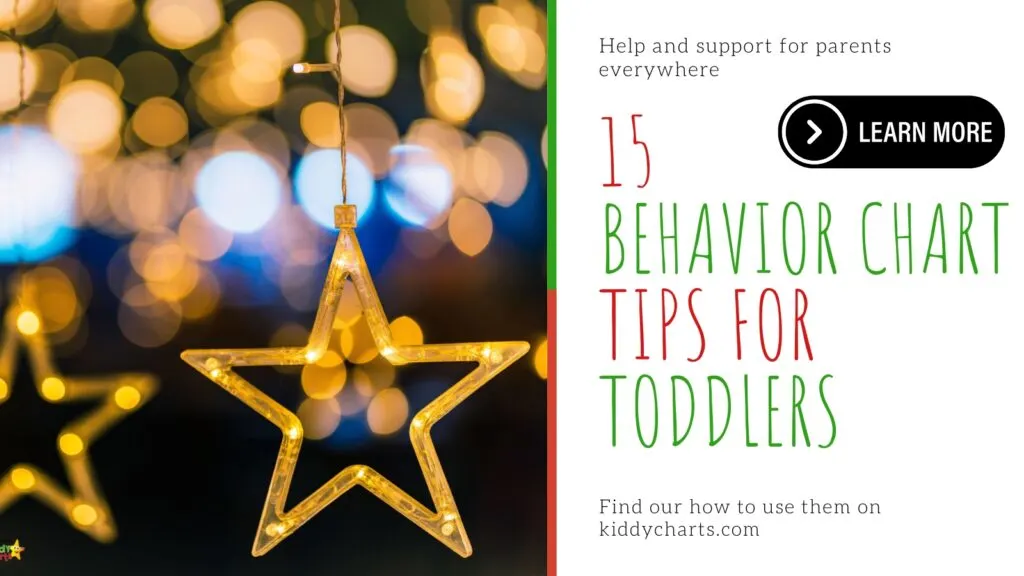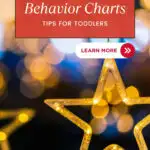Today, we have a little bit of a different post for you – we are, believe it or not, going to chat about our own positive behavior charts. Whether a chore chart, or using them for reward charts, they are a really simple reward system to support specific behavior and potty training. We haven’t really chatted about them for a while. So, if you are on the lookout for an exciting way to support behavior in your toddlers, then why not give them a go?
We know that they don’t work with everyone’s kids, and particularly if your children have a PDA profile within the autistic spectrum. However, they can be helpful for those children with ADHD, and they worked well for both of our kids, mainly because we involved the children from the get go in creating them, choosing the rewards, and in designing them. This is very important for those with neurodivergence. It doesn’t work for all, and frankly, that’s true for a lot of parenting strategies, isn’t it, with young children? Some work well, and look to be the best way to support your sanity, and then others. Nada! 😂
If you want to give behavior charts with your toddler a try to help, and think that sticker charts are the way to go – check out these 15 ways to use the KiddyCharts charts with toddlers. If you are using with slightly older children, then you can still take on board these tips too.


The first thing to notice about our charts, is that they are free printable behavior charts, so you don’t need to pay a penny to download and print as many of them out as you want – so experiment with them, and see which one works best for your children.
Why bother with our KiddyCharts Star Charts
First of all – don’t forget to sign up to our newsletter – we are all about the free printables, and advice weekly!
Now, before we give you our tips, let’s understand why KiddyCharts behavioural charts are helpful for kids sometimes. We all know that toddlers can display difficult behavior sometimes, and that this child’s age can be challenging for us as parents.
Remember the FIRST thing to do before using a chart is to examine how we behave too – our toddler’s copy our behavior and learn from us, so we need to practise calm emotional regulation, to model it, to help them to learn to do so. Gold stars and a rewards chart are not a supplement for looking at how we manage our own emotions first. Don’t forget to do this when you are chatting with your toddler. It IS the most powerful way for them to learn. Reward charts can be an effective tool alongside this.


We love our charts because:
- Celebrate positive actions: They are all about positive reinforcement, giving a star for the behavior that you seek. Make sure that you don’t shame for the times that things didn’t go to plan though. This is really important,
- Visual fun: With their colorful layout, they grab those wandering attention spans to help to keep them engaged,
- Learning with a personalised theme: These charts introduce youngsters to the world of goals and achievements, using playful themes as stepping stones – pick the theme that works the best for your child, and
- Consistency in parenting: They keep you focused on the goal too – which is no bad thing. Don’t beat yourself up though if that doesn’t work, or indeed if the charts don’t work for your child. They are, after all, different, and that’s to be celebrated.
You get to build these charts with your kids, they won’t cost you a a penny as they are all part of the free resources that we have on the site for you all. They can be customised to your child’s interests and specific behavioral aspirations.
Harnessing KiddyCharts for your tiny tots


Here are 15 tips to maximise the enchantment of KiddyCharts behavior charts, making them for effective tools for your toddlers. We hope that you find them an easy way to support your parenting. Feel free to contact us if you need any further support though.
1. Get them involved in the chart creation
This is actually THE most important for the points. If your toddler loves fairies, or robots, then get them involved and pick a theme that they love for their reward chart. The more involved they are, the happier they will be about the process. Explain what you can to them keeping it as simple as possible for them to understand. Over complicate it, and it simply won’t work. The first time you use the chart, and make it, it needs to be a fun event you are all taking part in. You could even get them to decorate the final printed version too, so its even easier for them to buy in to it!
2. Keep goals clear
If your child is a toddler, the goals have GOT to be clear. One aim for every year of their life, don’t overwhelm them as other wise the children’s behavior chart becomes too complicated and just won’t end up working for you, or for them.


3. A picture says a thousand words
For the kids that aren’t quite there yet, we have used alternatively to the days of the week – so animals – so that they understand things a little more. Swanny Saturday was always a favourite of our kids 😂 This worked will for their ADHD brains, and it sometimes it works for other children too. Pictures can support learning before words, and writing are there.
4. Cheerful consistency is key
If you want behavior to be more consistent, so for example around bedtime routine, then be consistent with the chart. When you use it, when you chat about it, when you give stars for sensible choices. It is important to be consistent with language too. Don’t refer to your child as “bad” talk about behaviours and explain what you are aiming for, rather than just saying it is “bad”. So for example, if you are focusing on not hitting, this is an unkind behavior and can hurt the other person which causes sadness. It is best to keep language neutral and not focus on negative behavior wherever possible.


5. Celebrate small victories
It is good to celebrate when things go well, but don’t go over the top – as even toddlers know when you aren’t being authentic! They’ll pick up on too much crazy dancing when the printable reward chart comes out, and feel you aren’t being truthful about things. Tell them they are doing a good job, even better be SPECIFIC in your praise and talk about making good vs poor choices. They way even younger kids will understand what is expected of them.
6. Keep the chart in plain sight
Our chart was in an obvious place so that it became part of the child care routine on a daily basis. If your child’s behavior chart is on the fridge, or on their bedroom wall, it is so much easier for little kids to have it front of mind. And you too – we know what the choas of toddler-dom can bring. It is less of an effectifve way to support behavior if you keep forgetting to chat about it 😂
7. One step at a time
Keep it slow, and gentle – use smiley face, or star stickers, and a tangible reward (s) that your toddler is happy with. Keep to a few desirable behavior ideas, and don’t expect too much too soon. Slow and steady.


8. Colors galore
Our charts are already full of colors – but why not add more to them to personalise them even more, perhaps some glitter, really colorful stickers, felt tip – whatever works for your child will encourage them to believe in the chart too, and support good behavior.
9. Rewards that work for YOU
Every single reward needs to be something that works for your toddler. Get them to help choosing them. We have some ideas from our kids – 17 of them to be precise – but there will be tangible rewards that work best for you. These might be completely different for your children. Do bear in mind that it doesn’t always have to be that new toy – there could be something fabulous like an extra book at bedtime, or watching TV in bed with Mummy and Daddy, or even a movie night in their bed with everyone on a tablet. Get creative!


10. The Power of yay
Positive reinforcement is a great way of teaching all about consequences – if we behavior in this positive way, then this happens. It’s important to focus on the positive though. We have always been believers in natural consequences, and how important it is to teach that to our children too. Reward charts are an initial tool in understand consequences – with positive behaviour generating a star. Understanding natural consequences, without parental involvement, will hopefully come next as children grow.
Bear in mind with your reward charts, so that we don’t focus on bad behavior, or even call it that. We are not using the charts as a way to shame our children into stopping un-desireable behaviour, but more to help them to understand the positive behaviours give positive reactions. It is a step along the way and not the end-goal though.
One note here is that it is important to help our children to find solutions to come of the challenges they might experience. For example, children with ADHD have poor working memory, and so forget things often. It is about helping them to build strategies for checking they have what they need, and not making them feel bad when they do forget things. Natural consequences need to be tempered to what the capacity of the child is. Executive functioning in those with ADHD is 2-3 years behind their peers. This needs to be taken into account when working through natural consequences. Sometimes our ADHD kids need an external frontal lobe to help them learn and build resilience. 😂
11. Be flexible and update things
If the chart has worked, and needs mixing up – then do it! If you have a chart for too long, kids get bored, so you new to mix it up with a new behavior, or even bin it for a bit and create a new responsibility chart another time with a new theme when you feel your children might need a bit more support.
We found that a whole three weeks for a reward was too long for our ADHD kids to wait, they are so much more about instant gratification. So we have a reward much sooner, and that made things easier. It did mean we had to think hard about what those rewards were when we mixed this up when they were younger. Be creativity is the name of the game when you are a parent, right. Pick rewards you can do daily that aren’t too complicated for you to do. For example, an extra DVD at night, or a trip to the park, or bowling alley – whatever your toddler loves. But perhaps after a week and not three!
The stars, and stickers are, of course, immediate rewards, we married this up when the charts were full with other rewards, but this is totally up to you. A star wasn’t enough for our kids 😉


12. Chat about it as if you’re in a fairytale
We know that some toddlers have wonderful imaginations. That’s why there are so many designs for our charts. Make the chart part of a story to make it even more fun – the chart could be part of an adventure or a quest for your kids. Be careful with this one though – you might get a child like mine that decided they weren’t int he story anymore, so didn’t need the chart 😂
13. Be your kid’s cheerleader
We have emphasised this already, but it is important to use the chart in a positive ratther than a negative fashion – so keep the focus on the good behaviour and don’t bang on about the disappointments.


14. Keep your own patience
We have already talked about alloing your child to go slow. That in turn means that you need to be patient about the how process. Don’t give up in a day because you cannot be bothered. Keep at it, twak the chart, chat to your toddler – come at it differently, or a different time of day, perhaps in the morning when there is less tiredness, if it isn’t working. There are no rules when you chat about your own chart, so make them up for yourself!
15. Know when to stop
If it Isn’t working – stop. Charts are, as we have already said, not for everyone. If you think that you are banging your head against a brick wall with this – stop. It really isn’t worth it!


Remember, the true power of KiddyCharts lies not just in the stickers and the charts, but in the memories you’re crafting and the simple lessons that can last beyond those toddler years.
Now, with these tips fluttering in your net, you’re all set to make behaviour charts part of the way you are parenting. It might work well, it might only work sometimes, or it might not work at all!
Give them a go, and then may your parenting journey be a little bit easier, and you can stop and breathe once in a while. We know that this can be rather tough – we remember. Happy charting! 🌟
If you are after more reward charts resources on KiddyCharts, do check out these ideas too:
More reward chart ideas on KiddyCharts
Here are some more tips, ideas, and charts for you to check out on KiddyCharts. We hope you love them all.
Bedtime routine chart to print now
This is a specific bedtime chart for you to take a look at - a great idea with a schedule depending on the age of your child too.
Free Printable Potty Training Chart for Toddlers
These are our amazing potty training charts, and yes, they are a race track, and amazing! we have other designs too, so check then out in this post.
Using charts to help with the age old problem of bedwetting
Using the reward chart to help with bedwetting - advice from a specialist.
Good rewards for kids: 17 top reward ideas FOR kids BY kids!
Here are some fabulous ideas for reward charts chosen by kids - so they must be good, right?
We hope you like this article, and the charts too, any feedback, do drop us a line.
Take care,
Helen












